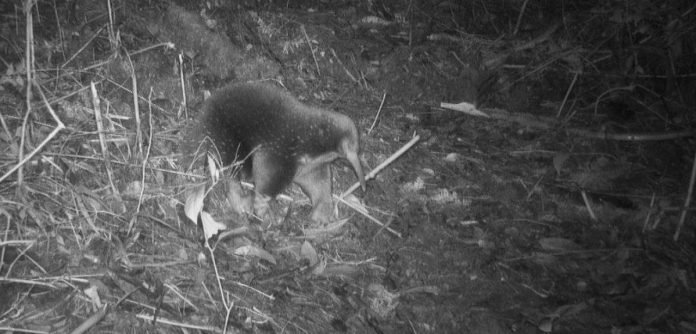
In a thrilling development in the world of wildlife conservation, scientists have recently rediscovered Attenborough’s long-beaked echidna, an iconic, egg-laying mammal, in the Cyclops Mountains of Papua Province, Indonesia.
This echidna, named after famed broadcaster Sir David Attenborough, had not been seen for over sixty years until it was captured in photos and video footage by an expedition team.
This team was a partnership between the University of Oxford, various Indonesian organizations, and Re:Wild.
The mission to find the echidna was challenging due to the inhospitable terrain, including venomous animals, leeches, malaria, earthquakes, and extreme heat. But the team’s efforts went beyond finding the echidna.
They discovered Mayr’s honeyeater, a bird not seen since 2008; a new genus of tree-dwelling shrimp; many new insect species; and an unknown cave system.
Attenborough’s long-beaked echidna is part of a unique group of mammals called monotremes, which includes the platypus.
These are egg-laying mammals, and the echidna is exceptionally rare, categorized as Critically Endangered.
Finding such a creature, known for being nocturnal and elusive, was a significant achievement for the team.
The expedition also involved a comprehensive assessment of the Cyclops Mountains’ biodiversity, including invertebrates, reptiles, amphibians, and mammals. The scientists, with the help of local guides, set up makeshift labs in the jungle to conduct their research.
They combined scientific techniques with the knowledge of the Papuan team members, leading to numerous discoveries.
The collaboration with the local community was a key element of the expedition’s success. The scientists built a strong relationship with the villagers of Yongsu Sapari, who shared their knowledge of the mountains and allowed research on previously unexplored land.
Despite the beauty of the Cyclops Mountains, the team faced many dangers. They experienced a sudden earthquake, and members of the team suffered from malaria and injuries. However, their camaraderie and shared goals helped them overcome these challenges.
The rediscovery of the echidna marks the beginning of a long-term mission for the team. Their goal is to bring attention to the conservation needs of the Cyclops Mountains and Indonesian New Guinea more broadly.
Key to this initiative is the NGO YAPPENDA, which aims to protect the natural environment of Indonesian New Guinea through the empowerment of Indigenous Papuans. The team’s efforts included training local students in biodiversity surveys and camera trapping.
With only a fraction of the collected material sorted, the team expects to identify more new species in the coming months, many of which will be named after the Papuan members of the expedition.
Additionally, over 75 kg of rock samples were collected for geological analysis, which could provide insights into the formation of the Cyclops Mountains and contribute to understanding the area’s biodiversity.
The expedition’s achievements are not just in rediscovering a lost species but also in highlighting the rich and diverse ecosystem of the Cyclops Mountains.
This effort has opened new doors for conservation and underscores the importance of perseverance, collaboration, and respect for local knowledge in the field of wildlife conservation.
Follow us on Twitter for more articles about this topic.



